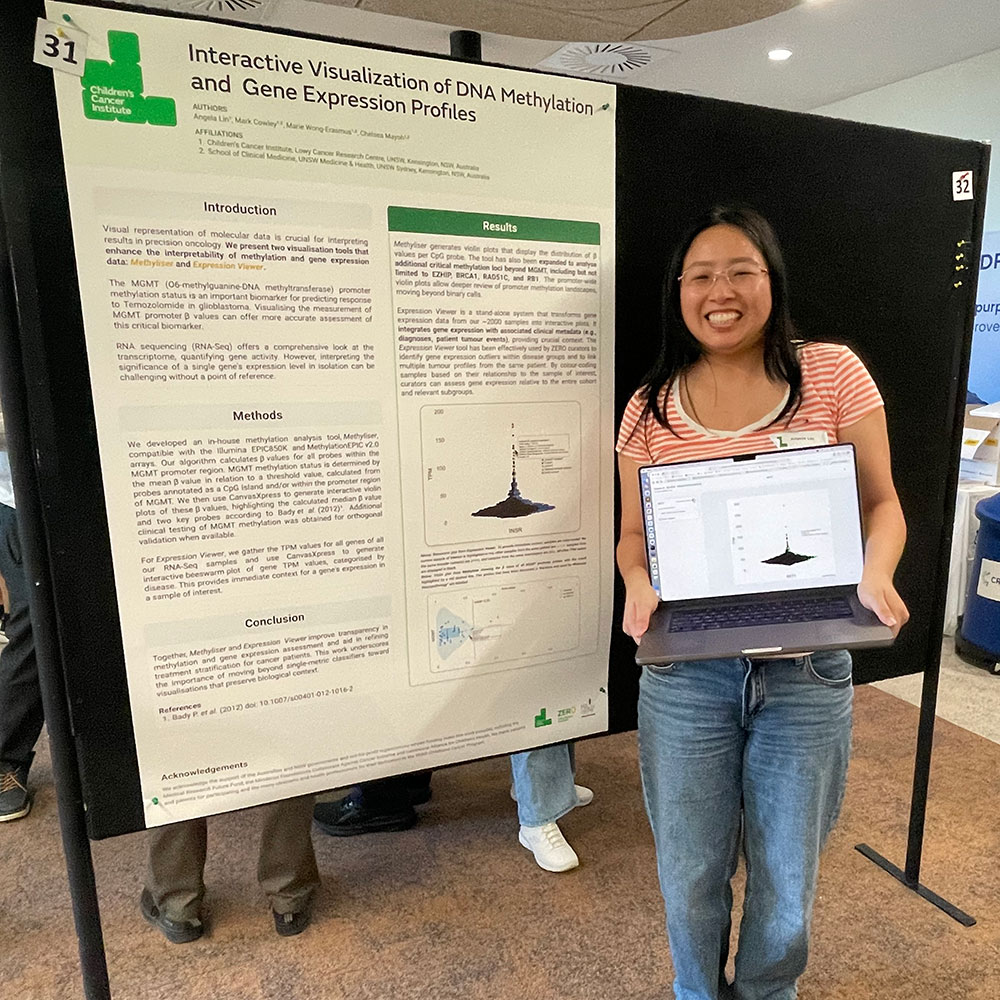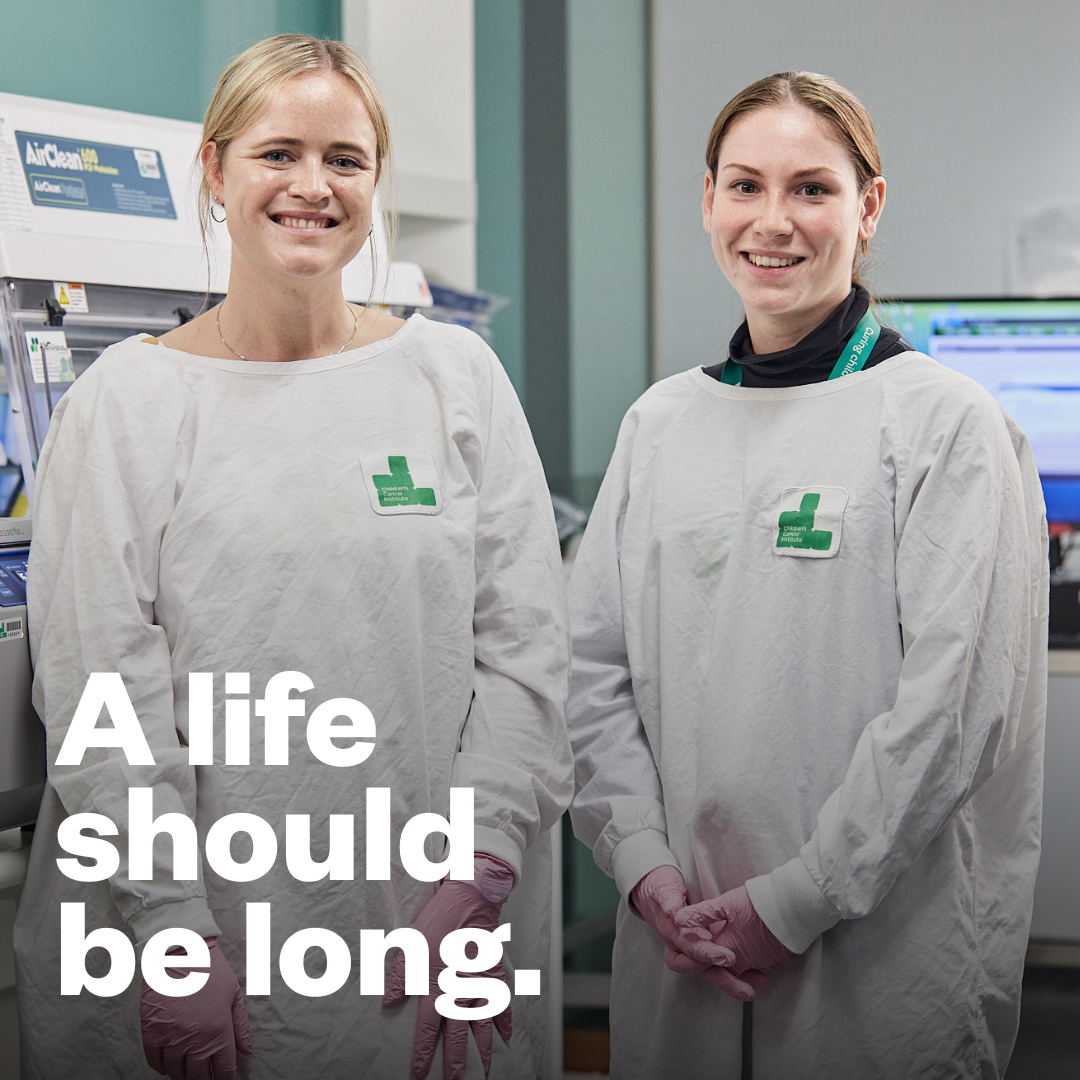What is genomics?
Before we can talk about cancer genomics, we need to define genomics. Genomics is the study of the genome. Simple, right? And the genome? The genome is the complete set of an organism’s (such as a person’s) DNA. It’s the blue-print required to create that organism and keep it functioning.
DNA exists as long strings of 4 different chemical units called ‘bases’, strung together in varying orders or ‘sequences’. Two DNA strings are tightly wound around each other – the famous double helix – and packaged into chromosomes. In humans there are 46 chromosomes. These are sub-divided into genes, each of which provides the information needed to create a particular protein, the building blocks of cells.
Humans have roughly 30,000 genes. Studying such a number seems daunting but manageable, until you realise that those genes, all together, are made up of more than 3 billion bases! An international collaborative effort to ‘sequence’ (read) the entire genome of one person (The Human Genome Project) began in 1990, took fifteen years and cost billions of dollars.

Scientists can ‘read’ the sequence of the three billion units (bases) of DNA that make up our genome (image: Wikimedia Commons)
Fortunately, technology has progressed rapidly since then. Scientists can now sequence the entire human genome in one day, for a few thousand dollars.
What is cancer genomics?
Cancer genomics means studying the genome of cancer cells. The DNA in cancer cells contains errors or ‘mutations’ – changes from the original sequence which cause the cells to behave abnormally.
A change can be as small as a single base (called a point mutation), for instance a ‘C’ can become an ‘A’. Or a change can be more extensive, involving a whole stretch of chromosome.
Some common types of genetic changes are:
- Deletion: a segment of a chromosome is lost
- Duplication: a segment of a chromosome is duplicated
- Inversion: a segment of a chromosome is turned upside down
- Insertion: a segment of one chromosome is inserted into another chromosome
- Translocation: the ends of two chromosomes break off and re-attach to the wrong chromosome

Some of the genetic changes found in cancer cells (image: Wikimedia Commons)
The ‘genomic landscape’ of cancer
Cancer cells have usually acquired many mutations, which, together, create their unique ‘genomic landscape’. Some of these mutations activate genes that make the cells proliferate (multiply) uncontrollably.
Some mutations block normal cell development, freezing the cells in an immature state. Others switch off the in-built kill-switch present in all cells, there to eliminate a cell if it becomes damaged and potentially dangerous.
The genomic landscape that causes a cancer to arise is usually not fixed but unstable and fluid. So cancer cells also have the ability to adapt to changing circumstances, such as an assault by chemotherapy. If, during a course of chemotherapy, a new mutation arises that helps a cancer cell survive, that mutation is passed on to all subsequent descendants of that cell, making them all drug-resistant.
The good news is that scientists are increasingly finding that the mutations that drive cancer cells and help them survive chemotherapy can be turned against them. They can become vulnerabilities to be targeted with new therapies that kill cancer cells while leaving normal cells unharmed.
The genomics of childhood cancer
The genomic landscape of childhood cancer is often quite distinct from adult cancer. As a rule, childhood cancer cells generally have fewer genetic changes than adult cancer cells.

Every landscape has its own distinctive features, that adapt to changing conditions
This does however vary with cancer type. While neuroblastoma tends to have fewer genetic mutations, acute lymphoblastic leukaemia has been classified into multiple subtypes based on specific genetic changes, each subtype having distinct clinical and prognostic implications.
Therefore, knowing the genomics of an individual child’s cancer is important. The information can be used to identify patients with more aggressive cancer subtypes and intensify their treatment accordingly.
What’s more, knowledge of the genomics of a child’s cancer can reveal genetic vulnerabilities that can be targeted. This is one of the aims of the Zero Childhood Cancer personalised medicine program. The cancer genome of each child enrolled on the program is sequenced to define the genetic changes specifically associated with their individual cancer. This genetic information is combined with other biological and clinical data to determine the treatment most likely to work on their particular cancer.
The search continues
The field of cancer genomics has already provided invaluable insights and opportunities. But there’s still a lot to be explored. Our researchers are continuing to map, in ever finer detail, the genomic landscapes of cancer. And as these features are revealed, they’re using this knowledge to find more effective, less toxic treatments for kids with cancer. The search continues.
Read about our research showing that DNA microdeletions help predict leukaemia relapse.















